Match the class of compounds given in Column I with their functions given in Column II.
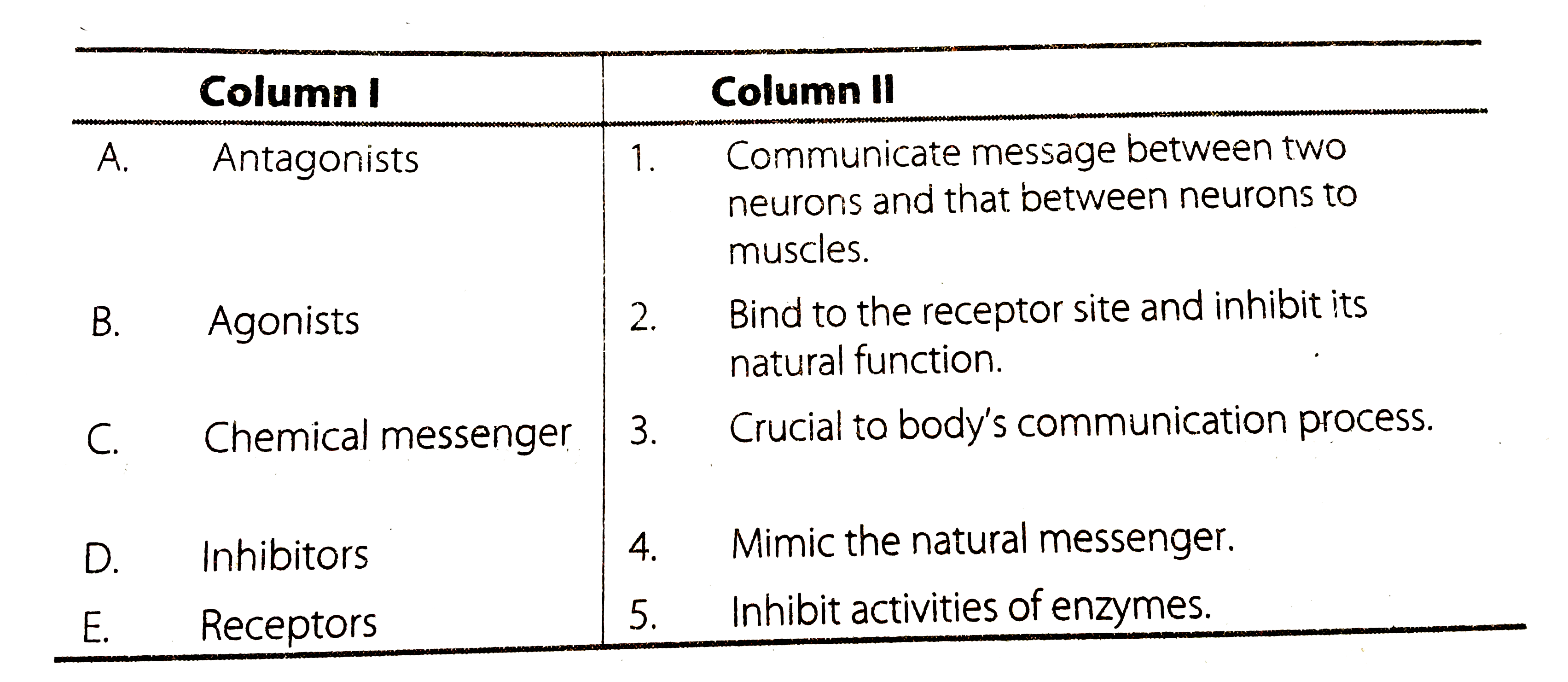
The correct Answer is:A→(2)B.→(4)C.→(1)D.→(5)E→(3)
A. Antagonist drugs are used when blocking of message is required e.g., doparmine antagoist is a drug which blocks the dopamine receptors antagonism.
B. Agonist drugs are useful when there is lack of chemical messenger e.g., herion.
C. These chemical messengers are received at the binding sites of receptor. These communicate between two neurons and that between neurons to muscles.
D. Inhibitors block the binding site of the enzyme and prevent the binding of the substrate, or inhibitthe catalytic activity of the enzyme. ltbr E. Receptors are proteins that are crucial to body's communication. They are embedded in the cell membrane in such a way that their small part possessing active site projects out of the surfae of the membrane of and opens on the outside region of the cell membrane.
Topper's Solved these Questions
- BOOK - NCERT EXEMPLAR ENGLISHCHAPTER - CHEMISTRY IN EVERYDAY LIFEEXERCISE - Assertion and Reason14videos
CHEMISTRY IN EVERYDAY LIFE
- BOOK - NCERT EXEMPLAR ENGLISHCHAPTER - CHEMISTRY IN EVERYDAY LIFEEXERCISE - Long Answer Type Qns4videos
CHEMISTRY IN EVERYDAY LIFE
- BOOK - NCERT EXEMPLAR ENGLISHCHAPTER - CHEMISTRY IN EVERYDAY LIFEEXERCISE - Short Answer Type39videos
CHEMISTRY IN EVERYDAY LIFE
- BOOK - NCERT EXEMPLAR ENGLISHCHAPTER - CHEMICAL KINETICSEXERCISE - LONG ANSWER TYPE QUESTIONS5videos
CHEMICAL KINETICS
- BOOK - NCERT EXEMPLAR ENGLISHCHAPTER - COORDINATION COMPOUNDSEXERCISE - Long Answer Type Question5videos
COORDINATION COMPOUNDS
Similar Questions
Match the classes of drugs given in Column I with their action given in Column II.
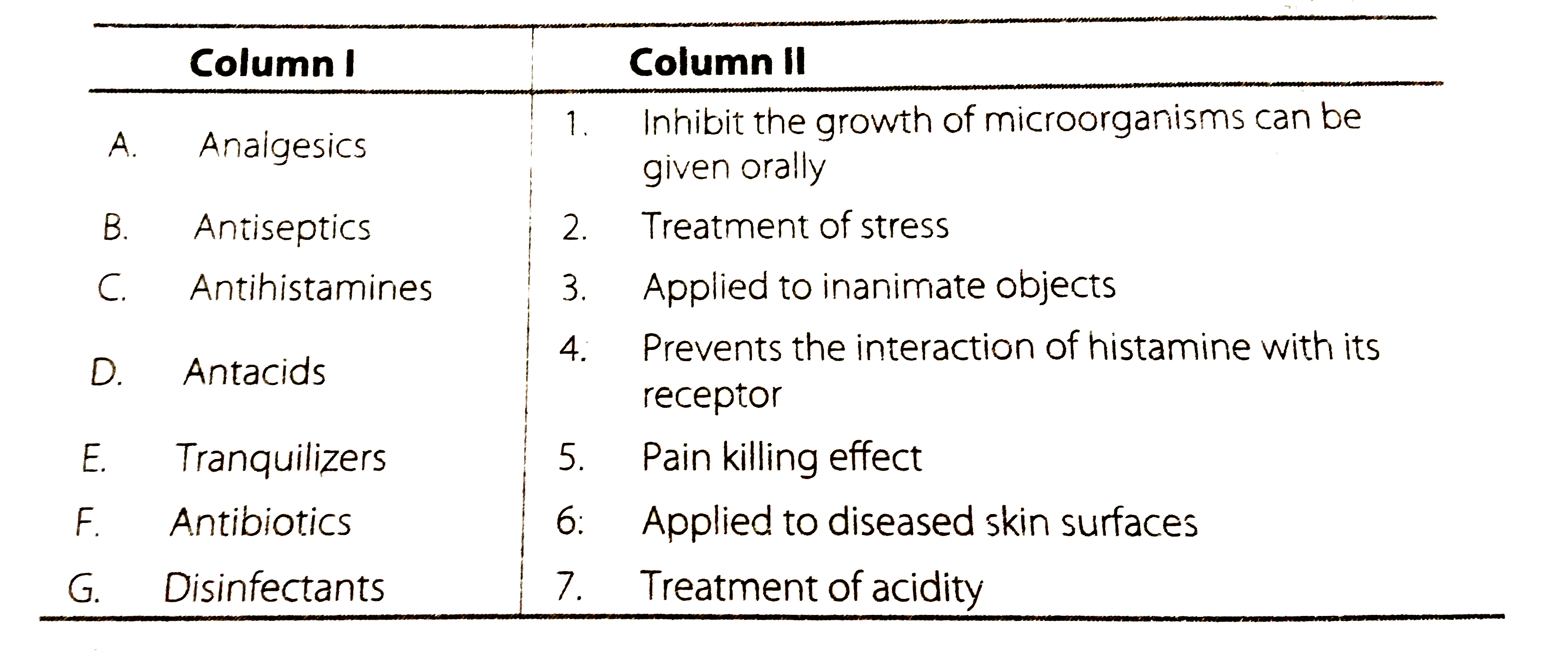 View Solution
View SolutionMatch the compounds given in column I with the effects given in Column II
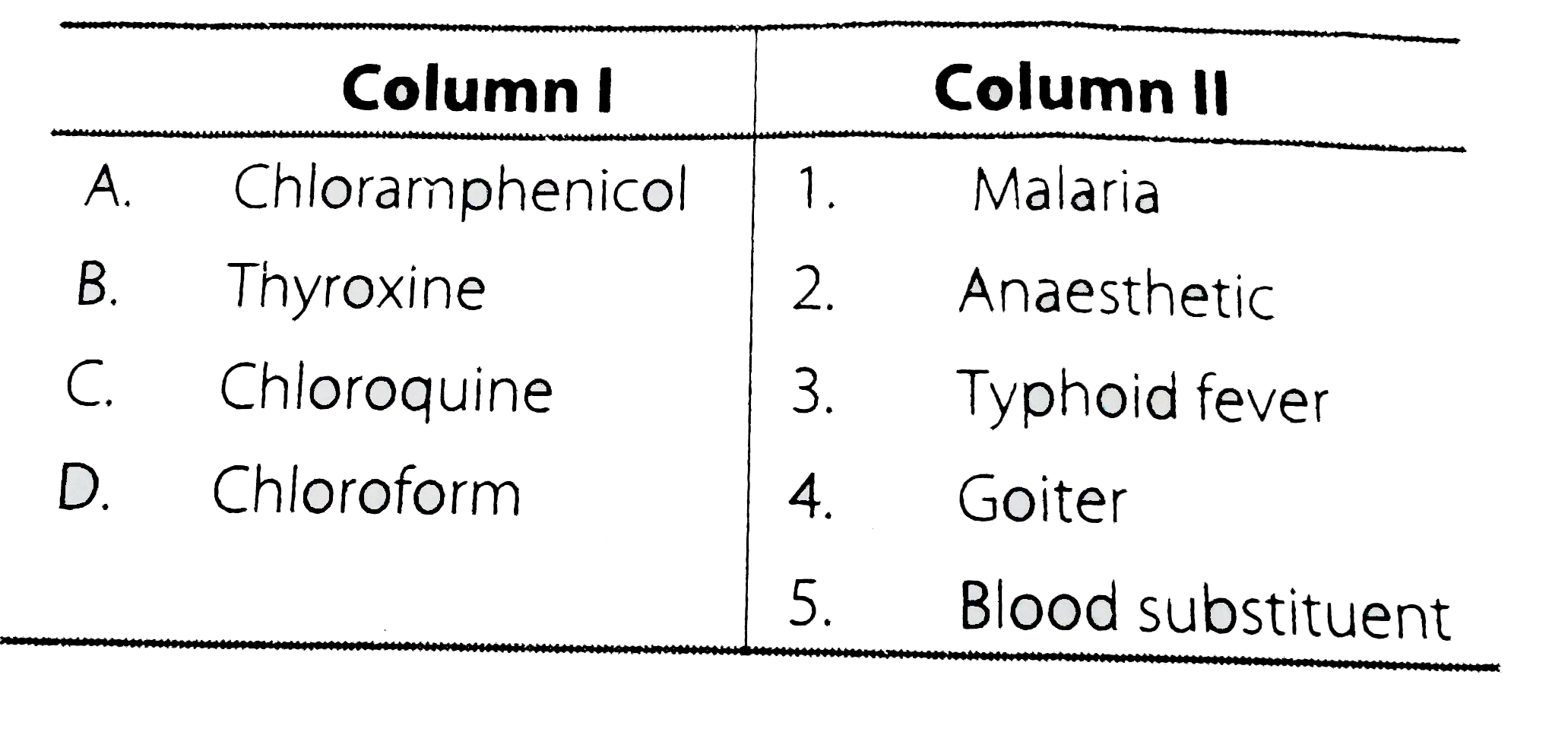 View Solution
View SolutionMatch the phytohormones given in column I with their functions given in column II. Choose the answer with the correct combination of the alphabets of the two-column.
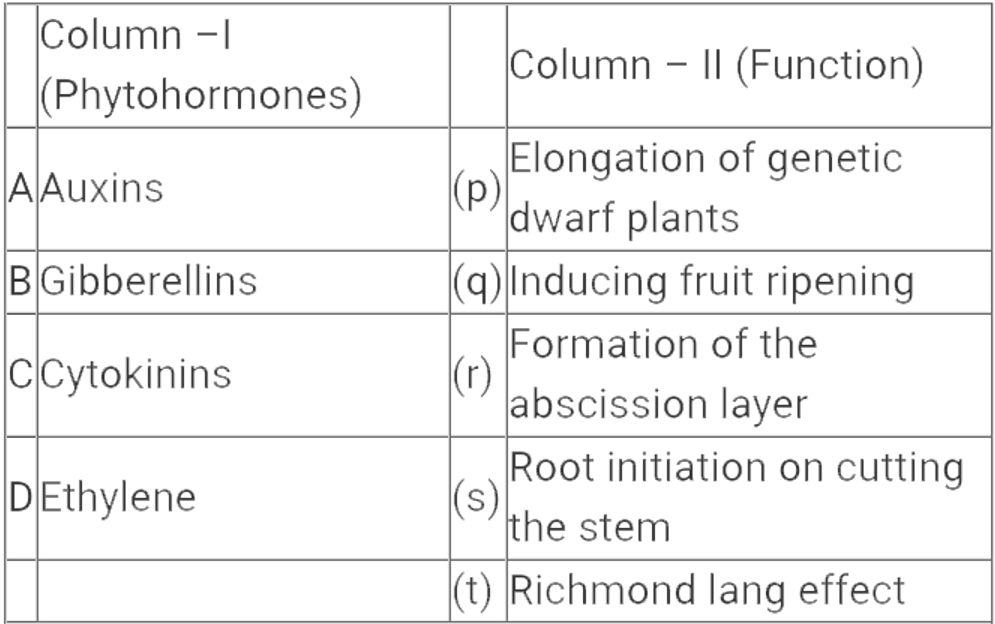 View Solution
View SolutionMatch the compounds given in Column-I with the items given in Column - II.
 View Solution
View SolutionMatch the pollutants given in Column I with their effects given in Column II.
 View Solution
View SolutionMatch the reactions given in Column I with the type of reactions given in Column II
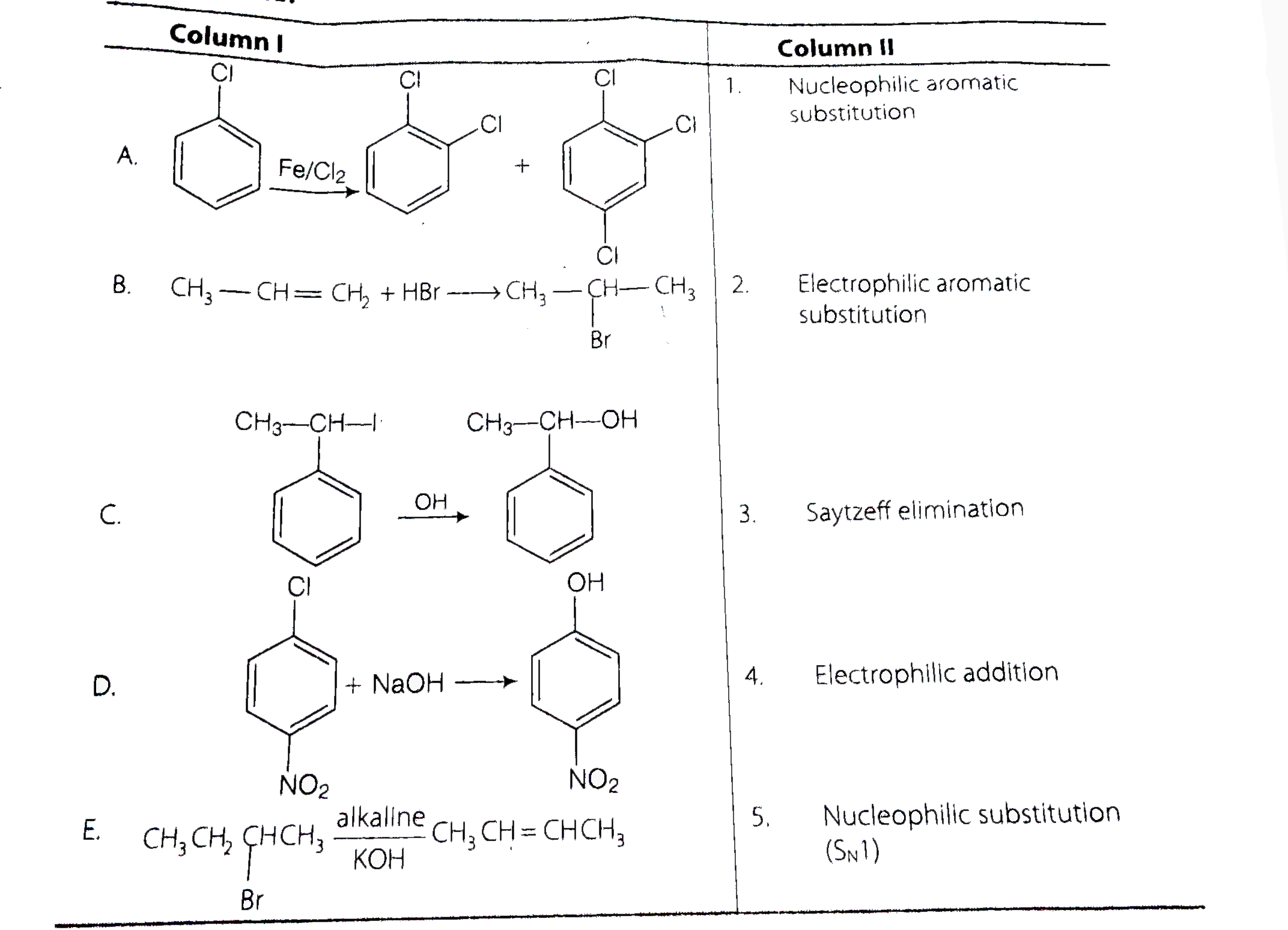 View Solution
View SolutionMatch the compounds given in Column I with the hybridisation and shape given in Column II and mark the correct option.
 View Solution
View SolutionMatch the ions given in Coumn I with their nature given in Column II.
 View Solution
View SolutionMatch the formulas of oxides given in Column I with the type of oxide given in Column II and mark the correct option.
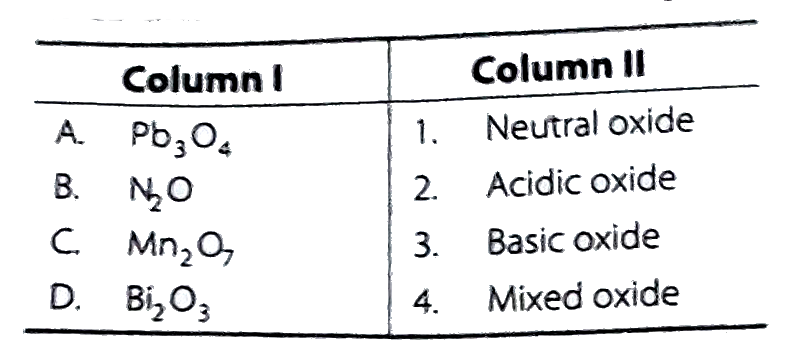 View Solution
View SolutionMatch the reactions given in Column I with the names given in Column II.
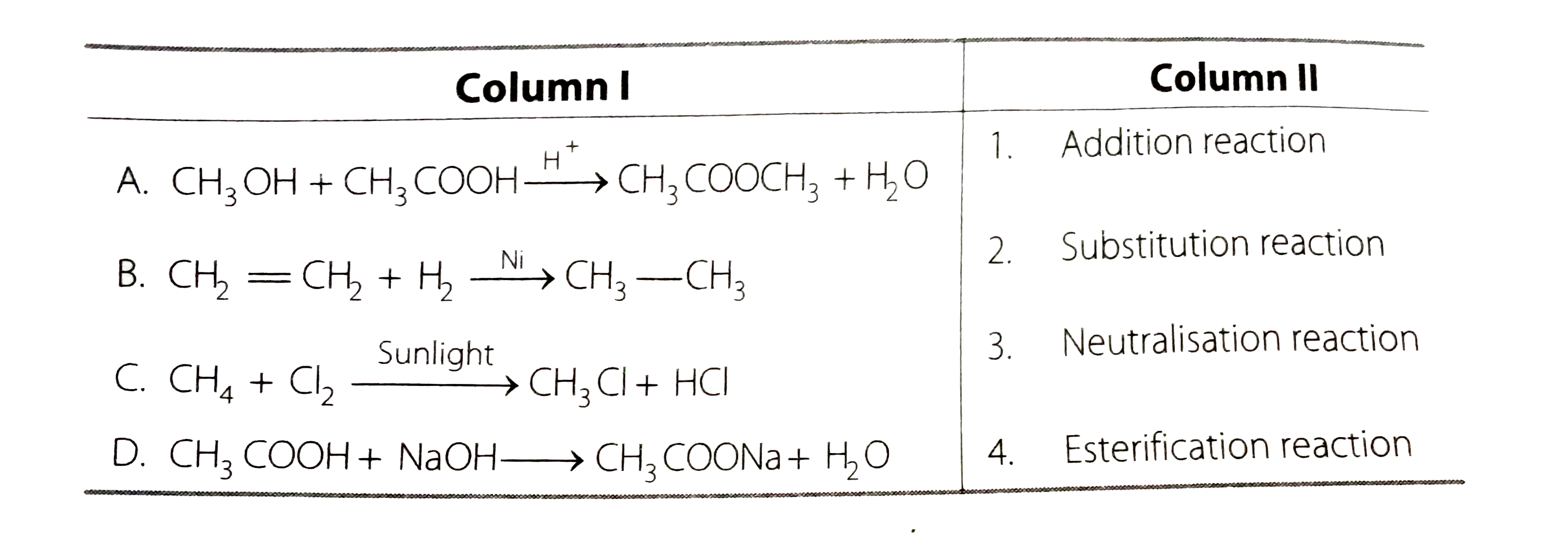 View Solution
View Solution

